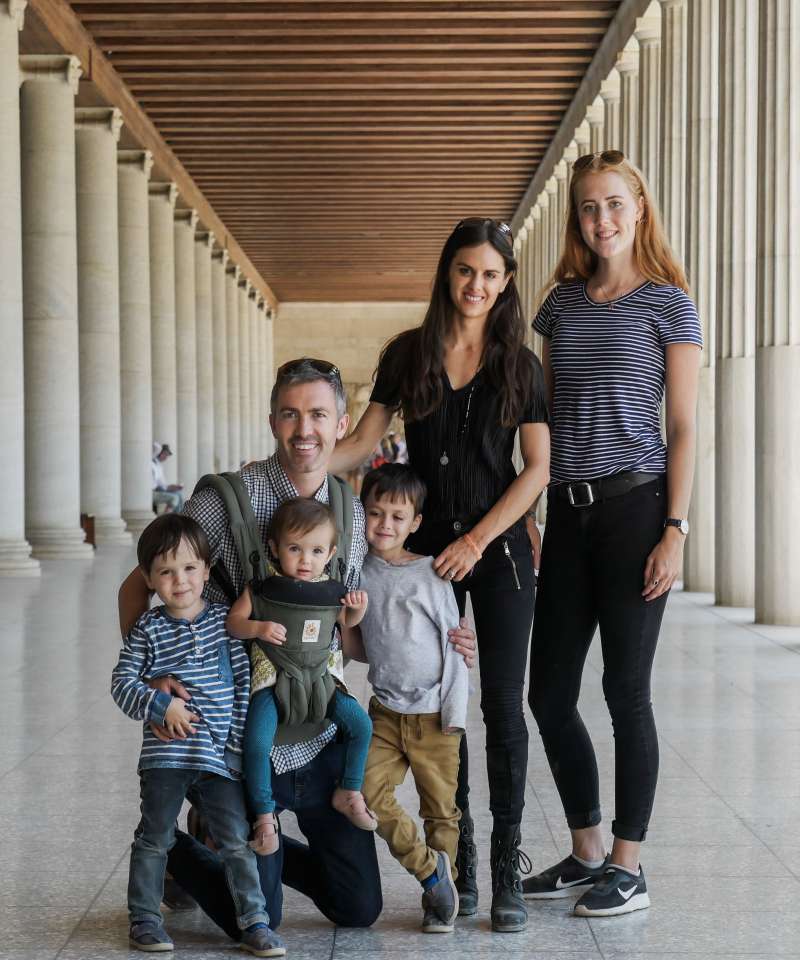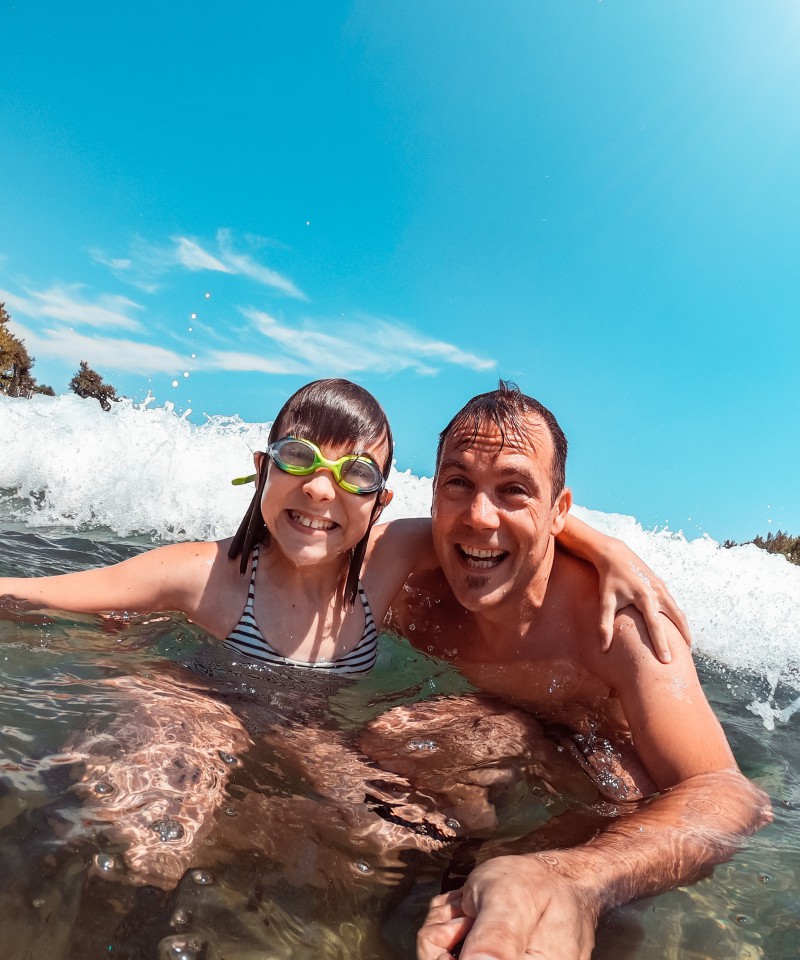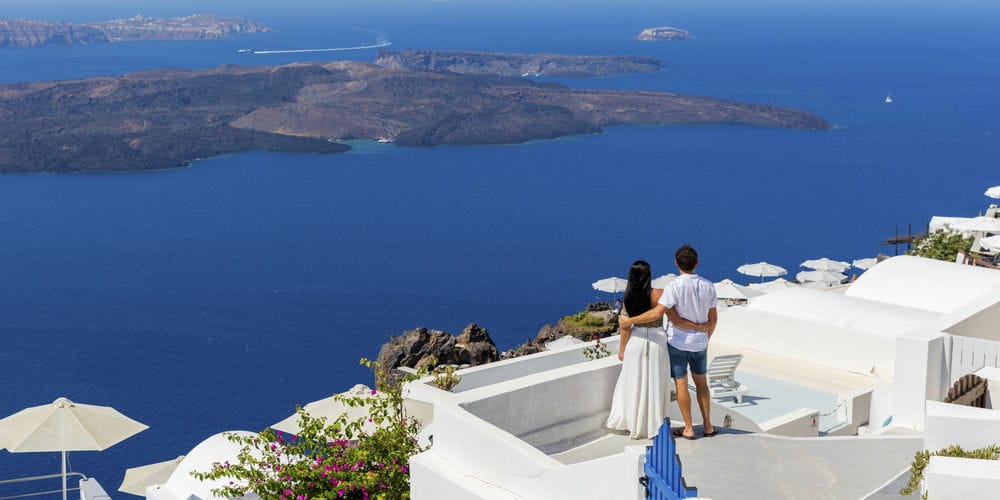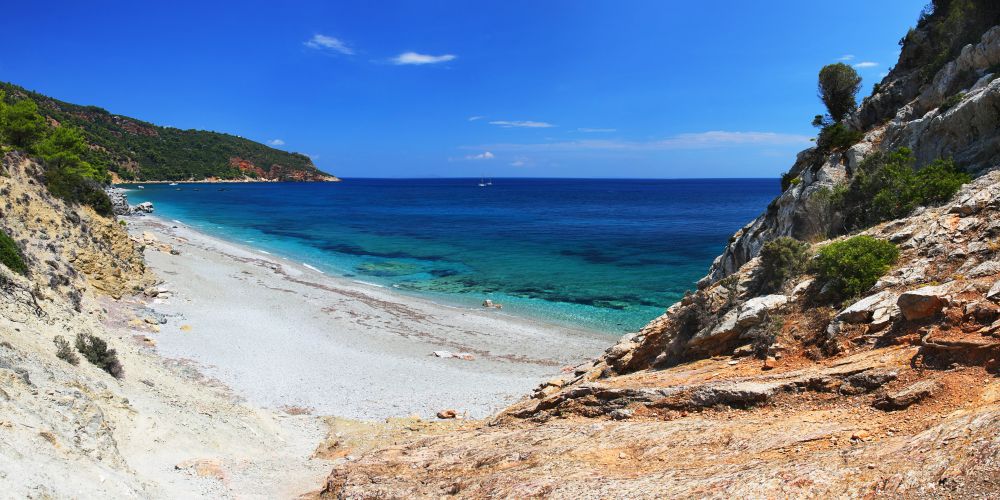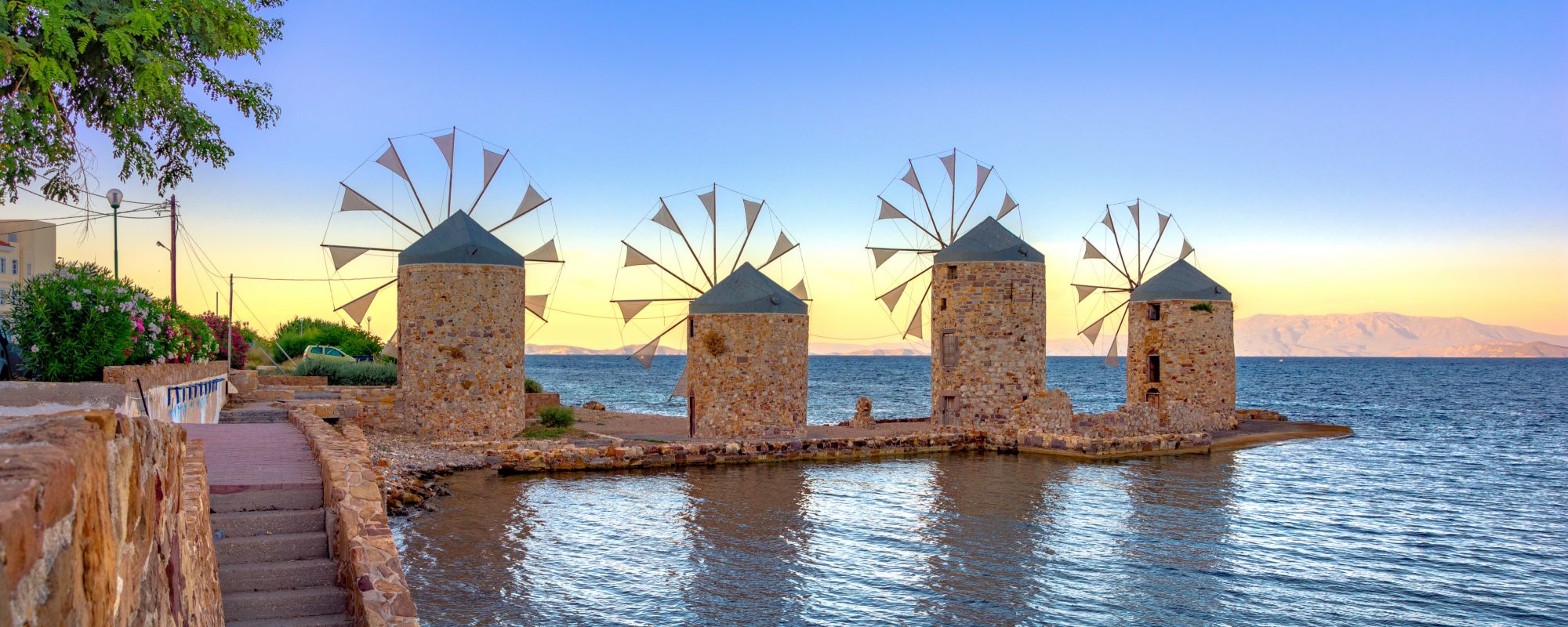
Chios Island Guide
Key Takeaways
- Chios Island is celebrated for its unique mastic production and rich historico-cultural tapestry.
- Medieval villages and stunning beaches offer diverse attractions, enhancing Chios as a multifaceted travel destination.
- The island caters to a range of interests from nature exploration to gastronomy and religious heritage.
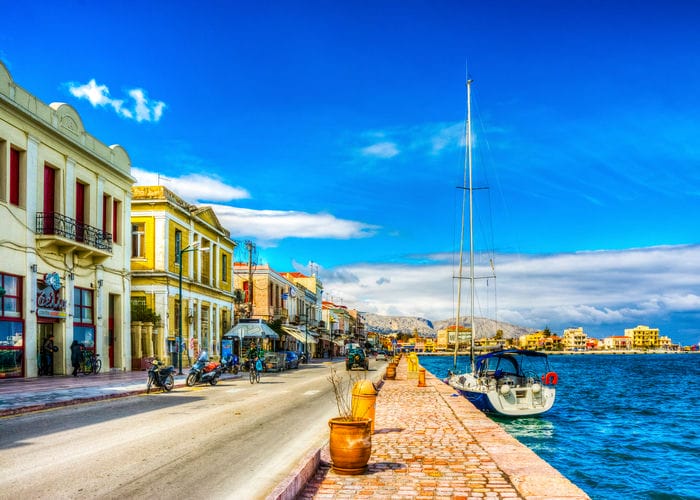
Chios Island, nestled in the Northern Aegean Sea, stands as the fifth-largest of the Greek islands.
With its unique position close to the coast of Turkey, it offers visitors a blend of cultural experiences and natural beauty.
The island’s history is deeply connected to the cultivation of mastic, a resin used for culinary and medicinal purposes, earning Chios the nickname 'the Mastic Island.'
This distinctive Greek product has shaped the island's economy and cultural heritage for centuries.
The island's allure not only lies in its mastic groves but also in its impressive medieval villages.
Pyrgi and Mesta are among these, characterized by their fortress-like architecture and intricate black-and-white geometric designs on the facades of houses.
Meanwhile, Chios' gorgeous beaches such as Mavra Volia with its distinctive black pebbles, and Karfas with its golden sands invite relaxation and leisure.
The island is also known for its extensive network of hiking trails, embracing the adventurous spirit of its visitors.
The History and Culture of Chios Island
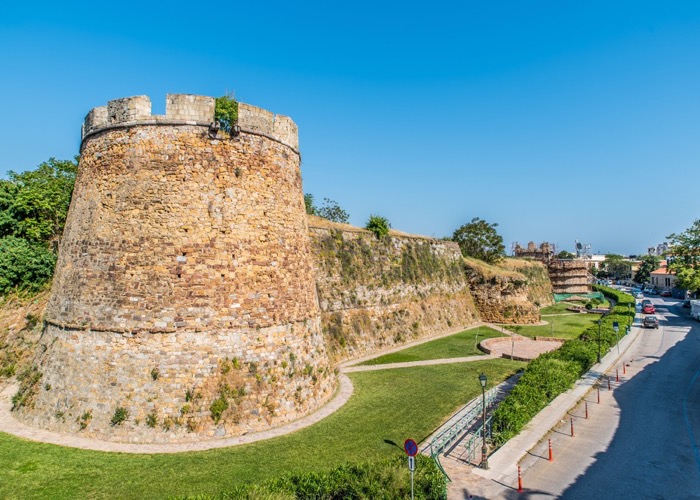
Chios boasts a rich tapestry of history and culture, marked by its ancient origins and its renown for mastic production.
Architectural landmarks bear witness to periods of Genoese rule and the island's strategic significance in maritime commerce.
Ancient History and Heritage
Chios was an important player in antiquity, known for its membership in the Delian League and for experiencing various phases of control, from the Roman to the Byzantine Empire.
Nea Moni, a UNESCO-listed monastery, epitomizes Chios' Byzantine heritage with its stunning mosaics and significant historical value.
The Byzantine Museum in Chios town furthers this narrative, housing an array of artifacts that tell the story of the island's past.
Mastic Production and Its Significance
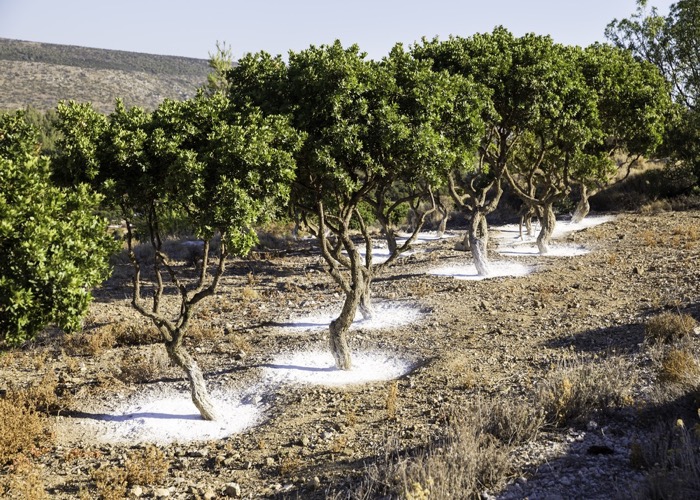
Mastic (Mastiha), a resin obtained from the mastic tree, is a product synonymous with Chios.
Its production has shaped the socioeconomic structure of the island since the Roman era.
The unique mastic villages, where this cultivation takes place, highlight both the cultural and economic importance of mastic.
Recognized as a UNESCO World Heritage Site for its cultural significance, mastic production continues to be a defining element of Chios culture.
Genoese Influence and Medieval Architecture
From the 14th to the 16th century, Chios was under Genoese rule, significantly marked by the Genoese family of Zaccaria who left an indelible mark on the local architecture.
Medieval castles and fortified villages developed during this time, displaying the Genoese knack for military and civilian architecture.
This era brought a fusion of cultural elements that are still evident today in the island's villages and towns, where Venetian and Genoese influences are woven into the local culture.
Exploring the Medieval Villages of Chios Island
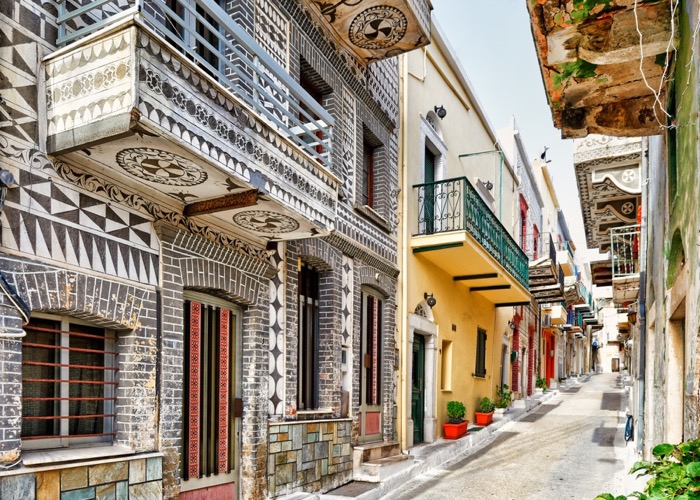
Pyrgi Village, Chios - credits: Constantinos Iliopoulos/Shutterstock.com
The villages of Chios from the Medieval times, often referred to as Mastichochoria, are renowned for their unique architecture and historic significance related to the production of mastic.
Mesta and Pyrgi: A Glimpse into the Past
Mesta: This well-preserved medieval village is a testament to Chios's heritage.
Mesta’s labyrinth of picturesque narrow streets and fortified walls exhibit the need for protection against piracy prevalent in past centuries.
The village layout was strategically designed, with stone houses built side by side to form a protective barrier.
Pyrgi: Known for its distinctive geometric designs, Pyrgi displays an extraordinary form of local architecture.
Houses in Pyrgi are decorated with xysta, black-and-white sgraffito patterns that are unique to the village.
This decorative technique involves etching designs into plaster, revealing a dark layer beneath the white surface.
Pyrgi, the 'painted village,' is located 26 km from Chios Town and serves as a living museum of medieval architectural innovation.
Architectural Marvels and Local Traditions
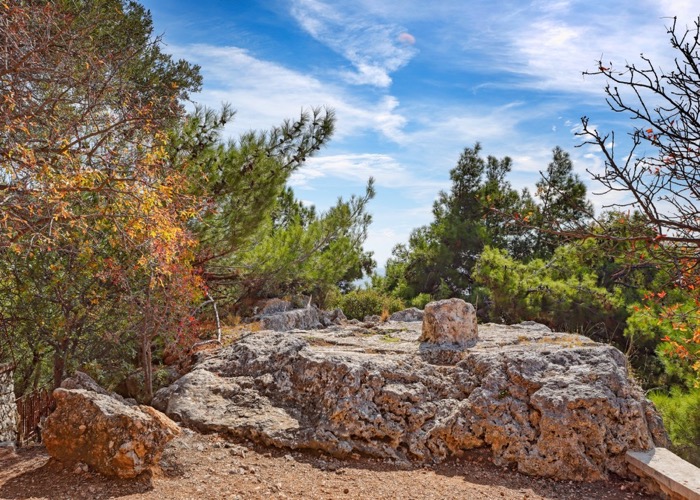
Mastic Production: The Mastichochoria, including Pyrgi and Mesta, play a crucial role in the cultivation of mastic, a resin obtained from the mastic tree.
This product has historically shaped the economy and culture of the island.
Anavatos: Although not part of the Mastichochoria, Anavatos deserves mention for its compelling architecture.
Perched on a rocky precipice, this abandoned medieval village adds narrative to Chios’s diverse architectural tableau, rendering a somber yet fascinating chapter of the island’s rich history.
These villages, with their deeply rooted traditions and distinctive architectural styles, offer an authentic look into the medieval past of Chios and underscore its reputation as an island of both beauty and historical depth.
Chios Beaches: A Guide to Seaside Splendor
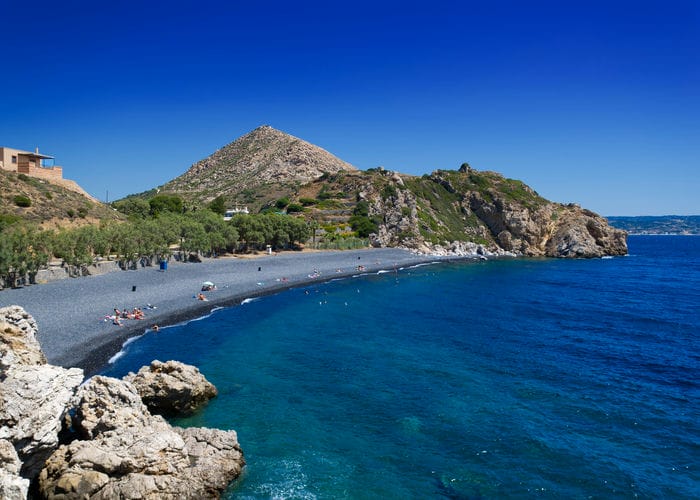
Chios , lapped by the Aegean Sea, is home to some of the most stunning and varied beaches. Each coastal spot weaves its own narrative through distinctive features and unmatched natural beauty.
Discovering Mavra Volia and Karfas Beach
Mavra Volia: Situated on the southern part of Chios, Mavra Volia is a standout beach that owes its distinctive dark pebbles to ancient volcanic activity.
The contrast between the black shore and the deep blue water of the Aegean creates a dramatic visual that captivates travelers. Mavra Volia isn't just about its appearance; the clear waters offer an excellent opportunity for swimming and snorkeling.
Karfas: On the other hand, Karfas Beach presents a contrast with its fine golden sand.
As one of the most accessible and well-organized beaches on the island, Karfas is ideal for families and anyone looking for beachside amenities.
The gentle slope into the sea ensures a safe environment for swimming, making Karfas a popular choice for both locals and tourists.
Unique Coastal Landscapes and Beach Features
- Aegean Sea: The surrounding Aegean Sea plays a crucial role in shaping the character of Chios' beaches.
- Its clear, refreshing waters are a common thread that links the diverse beaches of the island.
- Natural Beauty: Each gorgeous beach on Chios reveals a unique aspect of the island's natural splendor.
- From Komi Beach's long stretch of shoreline boasting crystal-clear waters to the remote beaches and tranquil bays nestled along the coast, Chios beaches are a treasure trove for nature enthusiasts.
Chios beaches not only offer sun, sea, and sand but also reflect the island's rich cultural tapestry and natural diversity.
Whether visitors are seeking the tranquility of lesser-known spots or the lively atmosphere of the more popular beaches, Chios caters to all with its seaside splendor.
The Mastic Museum of Chios Island

Located in the heart of the mastic-producing region of Chios, the Chios Mastic Museum is a modern institution offering visitors deep insights into the cultural heritage of mastic—the aromatic resin of the mastic tree (Pistacia lentiscus var. Chia).
The museum adeptly showcases the historical significance of mastic production, an activity exclusive to Chios and recognized on the UNESCO Intangible Cultural Heritage list.
Exhibits and Educational Value
The museum's exhibits artfully narrate the journey of mastic, commonly known as mastiha, from tree to finished products.
It demonstrates the traditional methods of cultivation and details the resin's various uses throughout history.
Architecture and Location
Set among the Medieval settlements known as Mastichochoria, the museum's architecture respects its surroundings, melding seamlessly into the landscape.
This thoughtful design emphasizes the bond between the local community and mastic cultivation.
Importance to Chios, Greece
Chios Mastic Museum plays a pivotal role in educating the public about the island's unique botanical treasure.
It preserves and promotes the legacy of mastic, which has heavily influenced the island's economy and culture.
In summary, the Chios Mastic Museum offers visitors an engaging and educational experience centered on Chios Island’s treasured mastic.
Accessible to all ages, the museum serves not only as a cultural repository but also as a bridge connecting the island’s past with present-day mastic practices.
Natural Wonders: The Caves and Valleys of Chios Island

The island of Chios is a treasure trove of nature's beauty, home to unique geological formations and the verdant valleys of Mastichochoria, renowned for its natural resin production.
The Cave of Olympi and Geological Formations
The Cave of Olympi, situated in the village of Olympi, offers a spectacular display of stalactites and stalagmites.
Discovered in 1985, it became accessible to the public in 2003 and has since fascinated visitors with its intricate limestone features.
The interior temperature remains steady year-round, creating an ideal environment for the formations to thrive.
- Location: Olympi, Chios
- Discovered: 1985
- Accessible to public: Since 2003
- Features: Stalactites, stalagmites, and other limestone formations
- Temperature: Constant
The geological marvels extend beyond the Cave of Olympi.
Volissos, located on the north-western coast of Chios, is a beautiful village surrounded by wild, natural landscapes featuring a mix of rocky terrains and lush greenery, indicative of the island's diverse geological character.
Gastronomy on Chios Island: A Culinary Journey
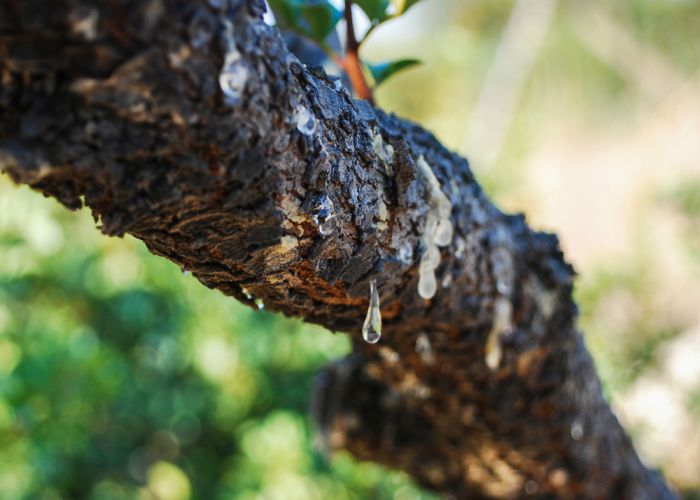
Chios Island's culinary landscape offers a rich tapestry of flavors rooted in local traditions and produce, complemented by diverse dining venues that range from traditional establishments to those offering a contemporary twist.
Local Flavors and Dishes
Chios is renowned for its mastiha, a resin obtained from the mastic tree, a natural product unique to the island that cannot be found in other islands or mainland destinations.
This aromatic resin infuses a distinct flavor into an array of dishes and beverages, including ice creams and the esteemed mastiha liqueur.
The island's fertile soil also nurtures exceptional figs and citrus fruits, the latter starring in the local cuisine as fresh fruit, juice, and in the form of sweet preserves.
- Citrus-based Products:
- Mandarin jam
- Citrus liqueurs
- Freshly squeezed juices
The presence of the Mediterranean Sea also influences the island's food culture, with local restaurants serving a variety of seafood that complements the rich selection of olives and olive oil integral to the Mediterranean diet.
Must-Visit Eateries and Food Experiences
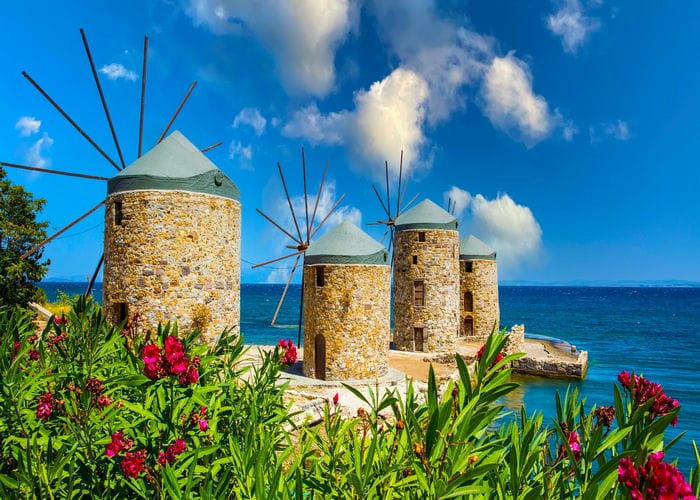
Chios' gastronomic offerings are as diverse as its heritage. Among its narrow streets, one can find a blend of restaurants that celebrate the island's culinary history.
- Notable Restaurants:
- Spontini: Known for ethnic dishes, with vegan and gluten-free options.
- Traditional tavernas: Where one can experience bread baked in wood-fired ovens and a variety of cheese.
International and Greek wine connoisseurs will appreciate the island's vineyards that produce excellent local wines, reflective of the region's unique terroir.
The opportunity to pair these wines with local dishes enhances the gastronomic experience for visitors.
Additionally, travelers can immerse themselves in cooking workshops or visit local markets to taste the raw ingredients that comprise the foundation of Chios' cuisine.
Religious Heritage: Monasteries and Churches on Chios Island
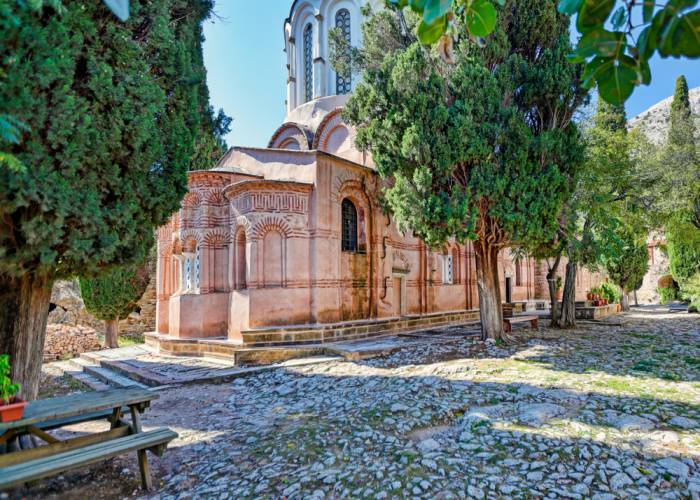
Chios possesses a rich tapestry of religious sites, featuring a multitude of historically significant monasteries and churches that are integral to its cultural identity.
The Spiritual Landmarks of Chios Island
Nea Moni, a key spiritual landmark of Chios, stands as an 11th-century monastery recognized as a UNESCO World Heritage Site.
Located centrally on the island, approximately 15 km from Chios Town, the monastery is particularly celebrated for its stunning mosaics that secure its reputation alongside other renowned Byzantine structures.
- Construction Date: 11th century
- Recognition: UNESCO World Heritage Site
- Unique Features: Exquisite mosaics
Numerous churches are scattered across the island, mirroring the deep religious faith of its inhabitants.
Among them, the St. George Church at Chios Castle, constructed in 993 A.D., is particularly noteworthy.
As one of Chios town’s oldest surviving churches, it has served various religious communities over the centuries, alternating as an Orthodox and Catholic church, and even as a mosque.
- St. George Church - Key Facts:
- Built: 993 A.D.
- Historical Role: Orthodox and Catholic worship, and a mosque
- Notable Artifact: Icon dedicated to Chios saints
The religious heritage of Chios reflects the island's rich historical narrative, illuminating its standing as a center for ecclesiastical architecture and art.
Visitors are often drawn not only to these sites’ religious significance but also to their artistic and cultural value, inherent in the architecture and iconography of each location.
Outdoor Activities and Adventures on Chios Island
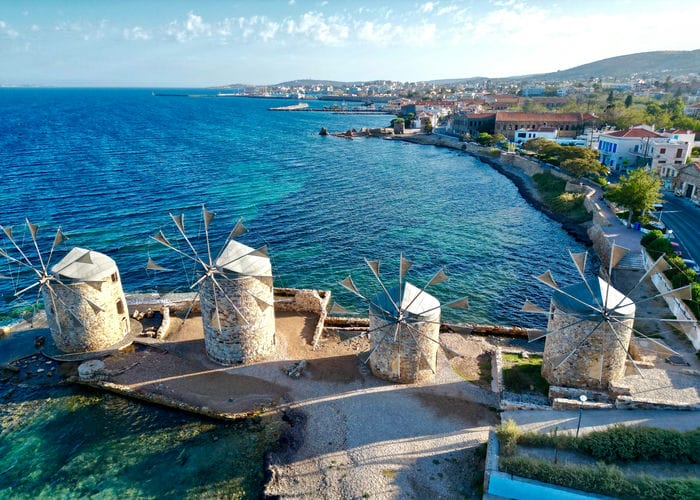
Chios, a hidden gem mostly known for its mastic culture, is also a hub for outdoor enthusiasts.
Visitors can engage in an array of activities set against the backdrop of the island’s diverse landscape. Beaches and mountains provide both relaxation and adventure.
Kayaking emerges as a favorite, allowing explorers to navigate the pristine waters at their own pace.
Many beaches provide rental services, while guided tours offer a structured way to see the coastline. Kayakers find half-day or full-day excursions suitable for all levels of experience.
For those who prefer land-based pursuits, hiking trails abound.
The rugged terrain and well-trodden paths leading to ancient monasteries, such as Nea Moni, provide both a physical challenge and historical insight.
| Sightseeing Spots | Activities |
|---|---|
| Mavra Volia | Budget-friendly beach outings |
| Nea Moni Monastery | Cultural exploration |
| Agia Dinami Beach | Swimming and sunbathing |
| Vroulidia | Secluded relaxation |
| Komi Beach | Family-friendly beach activities |
Sailing affords a different perspective of Chios, with the island’s coast being a perfect launch point for sailing adventures.
One can enjoy the winds and waves while taking in the sight of the Aegean Sea's crystal-clear water.
Travelers can also partake in tours to learn about the mastic production, a unique aspect of Chios with a global reputation.
This combination of cultural education and outdoor activity is distinctive to the island’s tourism offerings.
While Chios may not be at the center of mass tourism, its range of outdoor activities speaks to those seeking an authentic and engaging experience with nature and culture.
Final Thoughts
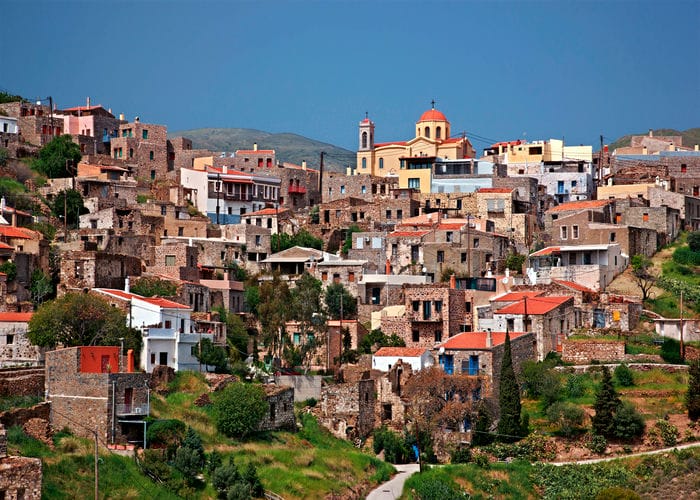
Chios offers an enchanting blend of history, culture, and natural wonder.
Its unique heritage, deeply intertwined with the ancient practice of mastic cultivation, bestows upon the island a distinctive charm unmatched by other destinations.
Chios' culinary scene, rich with mastic-infused delicacies and fresh seafood, promises a gastronomic journey that encapsulates the essence of the Mediterranean diet.
As a destination that has escaped the trappings of mass tourism, Chios retains an authentic character, offering a serene escape where one can immerse in the local culture and traditions.
Whether it's through exploring the mastic villages, savoring the local cuisine, or simply enjoying the tranquility of its beaches, Chios Island stands as a beacon of the rich tapestry that is Greek heritage, inviting all who visit to discover its many treasures.
From ancient temples and abandoned fortified settlements to medieval castles and fertile lands, and mastic villages flavored with the rare mastic resin, the island of Chios has it all!
Plan your own trip to Chios, or perhaps check out one of our Greek island tours and Greek vacation packages.
It is no coincidence that Christopher Columbus was rumored to have come from Chios!





